Business owners often think email marketing for retail is an outdated method. But the truth is, it’s the only tool with a guarantee that your audience will see your messages.
After all, if something is landing right in their inbox, it will at least pass through their sight. But of course, that isn’t enough. You must make sure the viewer opens the email to read your actual message. Doing this might seem overwhelming, but it’s easy to achieve with the right course of action.
That is exactly what we’re going to discuss in this article. So, if you want your email marketing to count and bring in sales, these tips will do the trick.
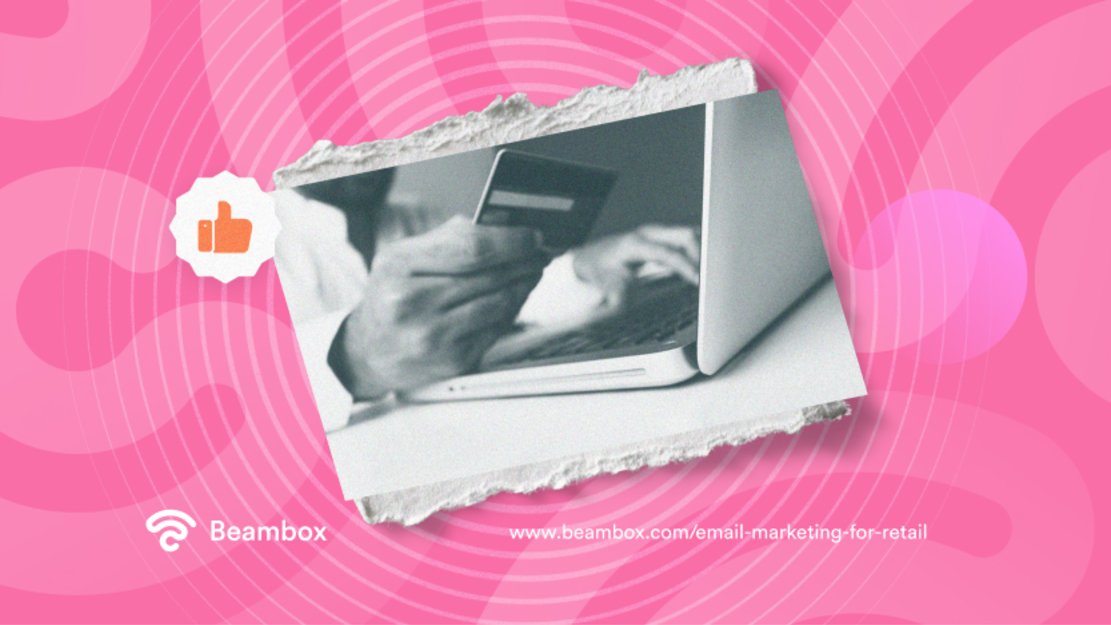
The Relevance of Email Marketing for Online Retailers
The world has moved past the days when people had to visit stores whenever they had to buy something physically. Now, it’s just a matter of preference, and most people choose the online method.
Owing to this reason, the competition in the online retail business is swelling at top gear. Customers have a ton of options, but they only choose the businesses that make an effort to stand out. Here’s how email marketing for online retailers helps.
Firstly, it’s personal and helps show your customers that you care about them and their needs. Just like SMS marketing, emails reach the user directly. Since you’re speaking directly to them, they’ll feel connected.
Nothing can bring you more revenue than customers who feel they belong with you. Email marketing is a cut above the rest in this regard. Of course, you can’t manually add their names and customize each email. But choosing the right email software and segmenting your customers will help.
Secondly, people usually opt to receive emails from a brand they do business with. And since it’s their own choice, they’ll likely view your message within the first hour.
This isn’t possible with other mediums like social media, where the volume of posts can bury your messages.
Thirdly, when customers make a purchase through your e-commerce website, you can send them an email about related products. Or if they have a filled abandoned cart, you can send them reminder cart emails to encourage a buying decision.
And lastly, you have full control over your email lists. Social media platforms are always changing their algorithms. Even if your posts perform well, there’s no guarantee that they will continue to do so. But it’s hard to lose an email list unless people unsubscribe. Your main problem will then be to collect customer data. In that case, you can use software that does the work for you, like WiFi marketing software.
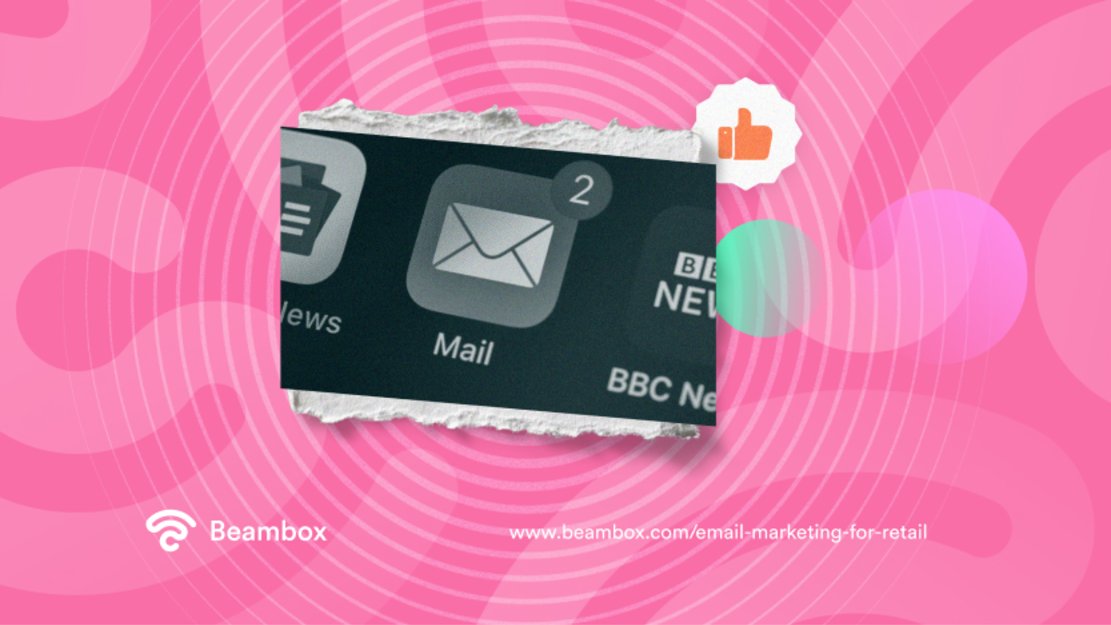
What Is the Average Open Rate for Retail Email Marketing?
While emails are best for ending up in your customers’ line of sight, they won’t matter if nobody opens them.
So, business owners want to know whether their efforts in email marketing campaigns are reaping any benefits. It may be cheaper than other marketing methods, but it takes up a lot of time and effort.
Therefore, the average open rate for retail email marketing is always a hot topic. If your mind has taken you to the same question, here’s the answer.
According to MailChimp, the average open rate for retail emails is 18.39%. However, it does not remain static. Some people open more emails on their mobile devices, while others prefer desktops.
But is this percentage a good open rate for email marketing? Well, it does fall lower on the number line, but you can’t expect everyone to open your emails. Even a 50% open rate in any industry is unheard of.
When it comes to email marketing, a good open rate falls within the range of 15 to 25%. Keeping that in mind, 18.39% is quite a good number.
Now that you know how groundbreaking email marketing is for retail, you must be excited to start. However, that won’t be wise since you don’t have the complete information yet.
Every business is incorporating AI in one way or another, including email marketing. Why should you stay behind? After all, it’s about working smarter, not harder! So, to make your work easier, here are five tools that encourage AI email marketing for retail.
- GetResponse: If you’re an email marketing beginner, this tool should be the first to enter your pool. It gives easily customizable templates and automation options to help you effectively send personalized emails to your customers.
- Smartwriter.ai: You don’t have to be a writer to create emails that catch your reader’s attention. This tool helps you build tailored emails and personalize your outreach so you get a massive return on investment!
- ActiveCampaign: You can’t send personalized emails without segmentation. After all, you’re not going to sit and write to each person individually. However, you can divide customers into groups using this CRM email marketing solution. Personalizing emails for a group would make your work easier.
- Drift Email: Your work doesn’t end after you’ve sent out the emails. You also have to keep an eye on your customer responses, and that’s where Drift Email comes in. It notes down the responses and directs them to the right person. For example, if someone has a query, this tool will direct them to the customer support department.
8 Retail Email Marketing Best Practices To Make the Most Out of It
Did you know for every $1 you spend on email marketing, you get a return of $36? That’s 36 times more than what you’re spending!
There are many reasons why email marketing is important for small businesses. However, it’s not easy to get customers to open your emails, scroll through them, and make a buying decision. Hundreds of emails land in their inboxes on a daily basis, and most of them face ignorance.
Therefore, you must give them a reason to pay attention to your message and not ignore it like the rest. So, here are eight retail email marketing best practices to stand out from the crowd.
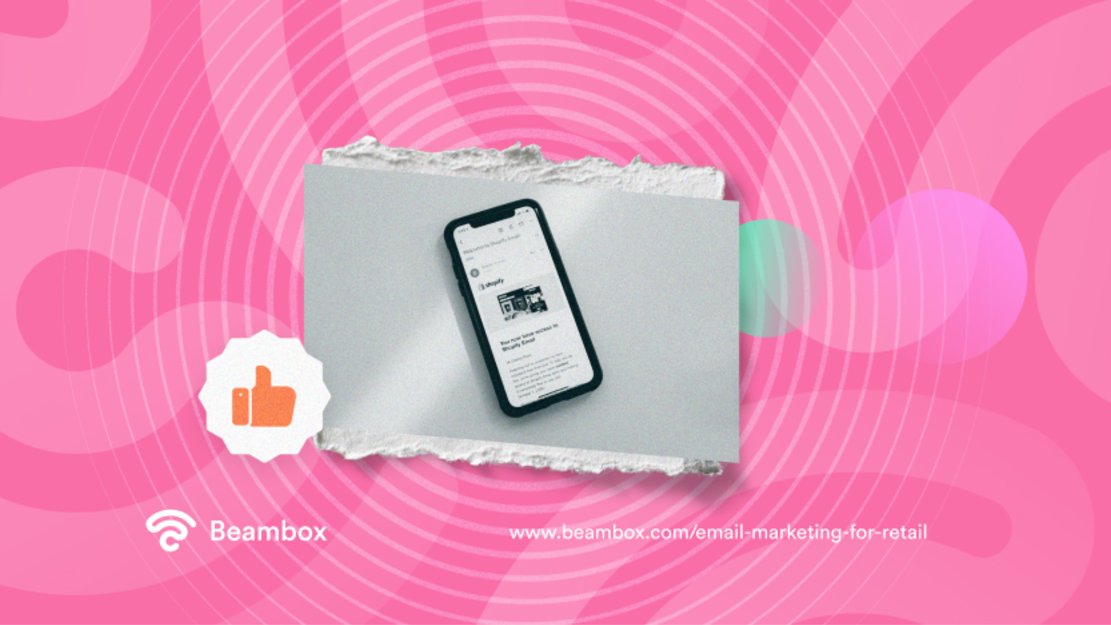
Don’t Forget To Send Welcome Emails
Let’s start this list with one of the most common email marketing mistakes. Are you not sending welcome emails?
Welcome emails are important because they mark the beginning of your conversation with your customers. They’ve chosen to get emails from you. So, the first step is to thank them for trusting you and welcoming them to your business. Here’s what you should do.
Start by giving them an automated confirmation that you have added them to your email list. Most people immediately want to know whether or not they’ve successfully entered their email address.
Next, express your gratitude in one or two sentences. Don’t go writing long paragraphs since that will bore the customer and make you look desperate.
It’s also good to display your best sellers and reviews in welcome emails. This way, customers will know exactly what they’ve signed up for.
Moreover, give them a small incentive, like a 10% discount on their first order. But spam emails are quite common, and someone might be wary even after giving you their email address.
Therefore, set clear expectations about the benefits of subscribing. Let them know what type of emails you’ll send and give them the option to unsubscribe anytime they want.
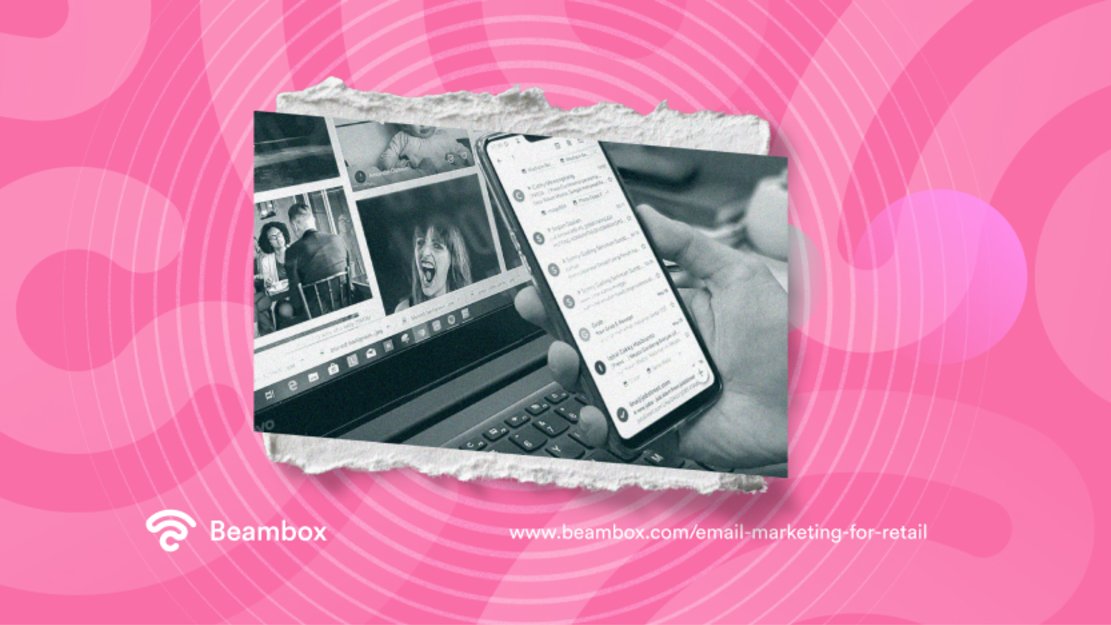
Pay Attention to Your Email Address
Your subject line is the first thing that people notice, but only if your email lands in their primary inbox. The perfect subject line and offer won’t make any difference if your messages end up in spam.
Therefore, you must pay attention to the email address you’re using. Don’t go for something like “noreply@company.com” because emails from such an address are very impersonal.
On the other hand, if you use the name of the marketing head, it will go to the primary folder. Plus, seeing a name will make people trust your words. However, your email should have human, personalized elements and shouldn’t just focus on making sales.
If that’s what you’re doing, your email platform will still mark it as spam. Therefore, try to avoid things that make your emails sound robotic.
Also, using a “no-reply” email address means you won’t get any responses. But knowing what your customers think about your brand can do wonders for it!
Deliver a Personalized Experience
We’ve talked about personalization for the entirety of this article, but now it’s time to discuss its implementation.
Personalized emails show the viewer you’ve taken the time to craft your words, especially for them. They can relate to your brand and feel connected to it. There’s no better way of making your customers feel special. This is even more important when doing mass email marketing.
Even just adding a first name to the subject line or body of the email counts as personalization.
Moreover, you can use cookies to see what your customers are browsing and send them related emails. Or if a customer has already bought something from you, email them related products for cross-promotion.
Additionally, keep tabs on your customers’ special days. Congratulating them on their anniversary or sending birthday emails with a small discount will make them loyal customers. And if that discount code is personalized, it will be the cherry on top! This is a fantastic way to get started with email loyalty programs.
Lastly, be mindful of where the customer stands in the sales funnel. Sending emails according to that will also give a personalized experience.
Inconsistent Branding Can Break the Deal
While personalization increases the effectiveness of your email marketing strategy, it shouldn’t come at the cost of inconsistent branding. If adding elements of the customers’ preferences and history is important, so are your brand elements. Here’s why.
Adding your logo, colors, and fonts makes your brand recognizable. They give you a basis to connect to your customers.
If your customers can’t figure out the source of an email in seconds, they won’t be able to trust it. Moreover, inconsistent branding will confuse them, and confusion always backfires.
Your tone and voice should also be consistent. For example, if you sell toys, a playful tone will make more sense. But you can’t use that same tone when selling more serious products, say medicines. It’s true that switching things up can increase engagement, but don’t sacrifice your core branding for it.
Make Your Subject Line Irresistible
As mentioned earlier, your subject line is the first thing your customer will notice. In fact, 33% of people open an email just because of its subject, so you must make it count.
A boring, standard subject line won’t make your customers open your email. What’s the point of sending emails if customers don’t even read them? So, here’s how to write the perfect subject.
Firstly, add the first name if relevant. These are cases where you’re wishing customers on special occasions or when you’re reminding them of an abandoned cart.
However, the first name won’t make sense in an email that’s the same for everyone. An example would be email newsletters about new products.
Secondly, keep the line under 50 characters. Making it longer than that will only annoy the recipient since the email platform will cut it.
Lastly, avoid words like “free,” “help,” or “reminder” that trigger spam filters. Remember, you don’t want your promotional emails to end up in that folder. For example, change “10% discount on Mother’s Day” to “Gifting your mother just got 10x easier.”

Allow Customers To View the Email in Their Browser
Until now, we’ve talked about the things you should do when creating the email itself. But if you really want to leave your mark, you should start the process way before the actual email.
Sometimes, emails don’t load properly on apps. In such cases, customers can get frustrated and abandon your email altogether. One of the ways to solve this issue is by letting your customers view the emails in their browser.
You don’t have to be a technical person to do this. In fact, your email marketing software will take care of it.
During the setup, it will ask you if you want to deploy a “view in browser” link. You just have to say yes to that.
Responsive Design First
While adding a “view in browser link” solves rendering issues, it doesn’t mean you should ignore mobile optimization. People are now more familiar with viewing products and buying them through their mobile phones. So, if your email crashes on mobile, it will annoy the recipient.
To avoid this, keep your emails limited to a single column. More columns will only disrupt the layout and make it crash on smaller screens.
Additionally, using larger fonts and typefaces will help the recipients read your message comfortably. This doesn’t just apply to headlines and paragraph breaks. Everything from the copy to the buttons should be big. You don’t want to make them squint their eyes just to read their name!
However, avoid fancy alignments. People’s eyes are familiar with reading from left to right, so keep your text left-aligned.
Moreover, your emails should have a lot of white space. If you jumble up the paragraphs, it won’t take long for the email to end up in the trash folder.
Therefore, break your paragraphs up and guide your viewers’ eyes by boldening the important words. If you’re still not sure what your emails should look like, try giving these retail email examples a look.
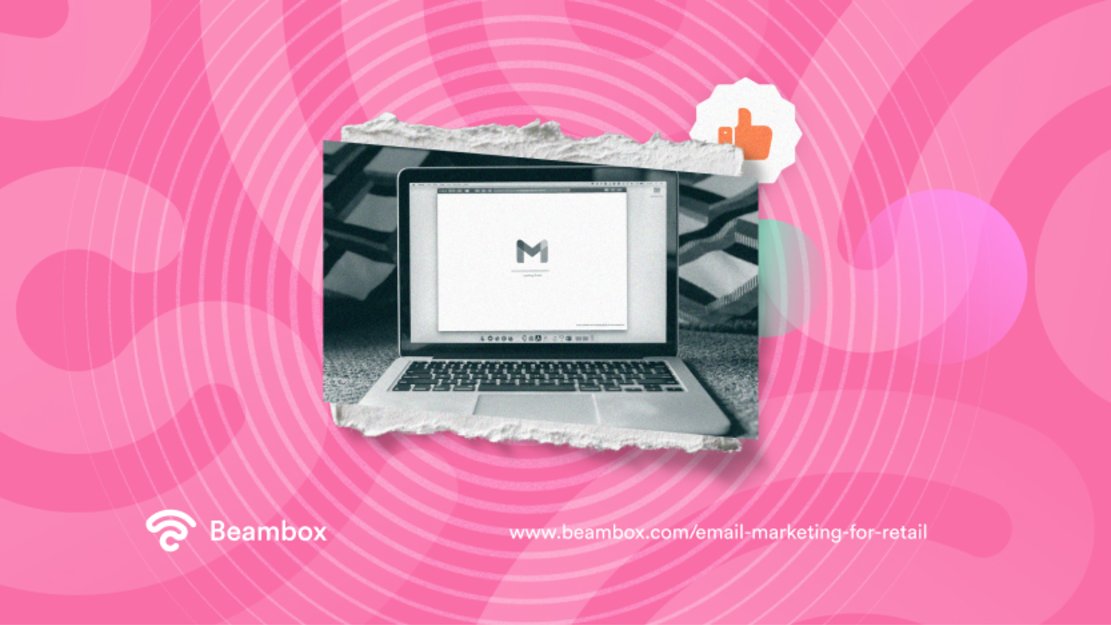
Storytelling Engages and Converts
The last tip for today is the one that humans love the most: stories. Children grow up hearing them; as adults, nothing can convert them faster than a relatable story.
No matter what marketing campaigns you run, you should use stories.
When you use storytelling in your emails, it creates a vivid picture in the recipients’ minds. They can judge exactly what they’ll get if they buy your product, and that encourages them to make instant purchases.
You might call it impulsive buying. But it’s all good if you’re not misleading them into believing something your product can’t give. So, here’s how to use storytelling.
Firstly, you must decide your unique selling points. What problems do you solve that no other business in your industry has touched upon?
From there, create a story about the problem and your solution through personal experiences or an imaginative scene.
Another thing people love is knowing where a business is coming from. They love hearing your story, how you started, and how you got to where you are. It makes them feel connected, and that connection is the judge that helps them make a buying decision. So, share your own story in your emails.
By now, you must be familiar with the ways to make email marketing for retail a ninja promotion move. You don’t have to invest in fancy software or hire a crowd of people to manage your emails.
A basic free software will work just fine, provided you have followed the best practices that make your email engaging. Follow the best practices, and you will get fantastic results.
If you want to automate your email marketing and grow a list of users, check out Beambox. It is a WiFi marketing platform that lets you run marketing campaigns easily while growing your online reputation. Discover all the features and how Beambox can help you grow your business. Twelve thousand businesses are using it. Do you want to be next? Start your free trial now!
Get Started With Free WiFi Marketing
Beambox helps businesses like yours grow with data capture, marketing automation and reputation management.
Sign up for 30 days free